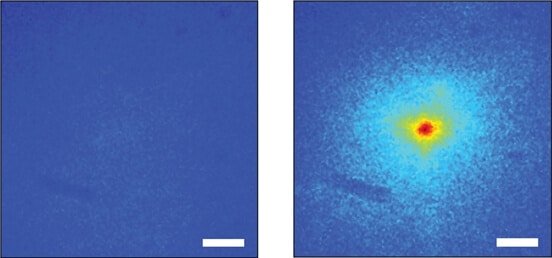Sometimes, in order to make a precise cut without causing damage to the area, the scientists use very short flashes of light (less than a millionth of a second), which have a high momentary intensity. Researchers at the Weizmann Institute improved the process

Here are some known facts about laser beams: Focused beams of laser beams have been used to cut metals for several decades. They can both replace the surgeon's scalpel and be used as a light source in medical imaging and advanced microscopy methods. In many of these uses it is necessary to focus the beam to one point to concentrate the light intensity. Sometimes, in order to make a precise cut without causing damage to the area, the scientists use very short flashes of light (less than a millionth of a second), which have a high momentary intensity.
When the focal point is on the surface, there is no difficulty in concentrating the light in one point. But what happens when you try to focus the light below the surface, for example in a cancerous tumor deep in the body? In such a case, difficult difficulties arise, even when the target point is at a depth of less than a millimeter under the skin. The difficulty lies in the fact that biological tissues are not transparent - the non-uniform structure of the tissues causes the light to scatter, so that instead of focusing on one point, it is scattered in an uncontrolled manner. In addition, the light flash, which was short when launched from the source of the laser rays, lengthens and distorts, as a result of passing through the scattering tissue. The result is a significant weakening of the light intensity, and the loss of the ability to use it as a sharp chisel.
Prof. Yaron Zilberberg, and research students Uri Katz, Eran Shamal and Yaron Bromberg, from the Department of Physics of Complex Systems at the Weizmann Institute of Science, examined how fast flashes of laser light passing through a scattering medium can be focused. They developed a way based on feedback: the system examines in real time how the light passing through the medium is dispersed, and with the help of a mathematical algorithm designs a laser beam that "compensates" for the expected dispersion.

The computerized system produces a laser beam with characteristics that are "tailored" exactly to the tissue, so that the beam reaches the target in the depth of the tissue when it is focused. In their study, recently published in the scientific journal Nature Photonics, the scientists describe a system that corrects the laser beam using a simple liquid crystal screen (LCD) like the one found in any computer projector. Until now it was known that using such a screen it is possible to correct only spatial distortions. The scientists showed that, quite surprisingly, using this simple system makes it possible to correct the distortions of the light flash even in the time dimension. In other words, the corrected light flash can penetrate the tissue, and reach the target while being spatially focused and also operating for a short time. The scientists hope that this system will help, in the future, in the development of applications of laser beams in medicine and biological microscopy in the depth of tissues, as well as in basic research in complex mediators.
